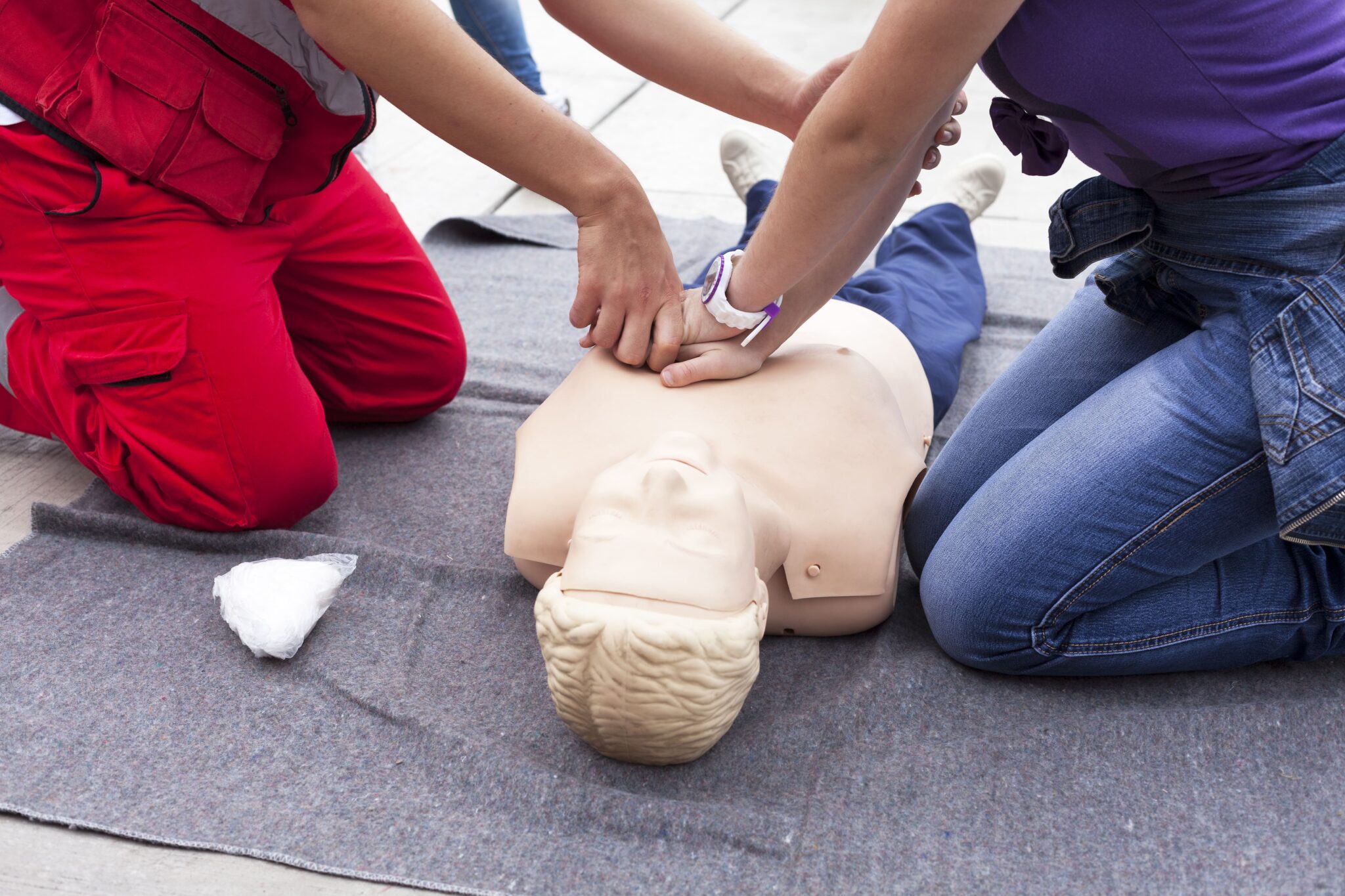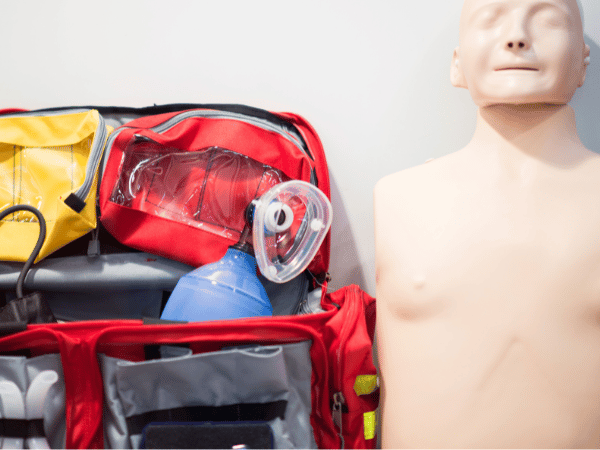In the dynamic and high-stakes world of healthcare, the ability to act swiftly and effectively in emergency situations is not just a desirable skill—it’s a fundamental necessity. BLS for healthcare providers (Basic Life Support) forms the bedrock of this critical response, equipping medical professionals with the skills and confidence to save lives during cardiac arrest, respiratory failure, and other medical crises.
Whether you’re a nurse, physician, EMT, or allied health professional, understanding and mastering BLS is essential. It goes beyond theoretical knowledge and enters the realm of practical, hands-on competence that directly impacts patient outcomes.
What is BLS and Why Does it Matter?
BLS, or Basic Life Support, is a standardized set of medical procedures used to sustain the lives of individuals in emergency medical situations until they can receive advanced care. BLS encompasses CPR (cardiopulmonary resuscitation), the use of automated external defibrillators (AEDs), relief of airway obstructions, and team dynamics during resuscitation efforts.
For healthcare providers, BLS isn’t optional—it’s mandatory. Patients often arrive in life-threatening conditions, and immediate intervention can mean the difference between life and death. A delay of even a few minutes in administering chest compressions or defibrillation can dramatically reduce a patient’s chance of survival.
In fact, according to the American Heart Association (AHA), effective bystander CPR provided immediately after sudden cardiac arrest can double or triple a patient’s chance of survival. Healthcare workers, who are often the first responders in clinical settings, must be thoroughly trained and prepared to act fast and effectively.
Core Components of BLS for Healthcare Providers
BLS training is comprehensive, emphasizing both individual skills and coordinated team responses. Here are the main components:
- High-Quality CPR
Healthcare providers are trained to deliver CPR at the correct compression depth (at least 2 inches in adults) and rate (100–120 compressions per minute). This must be performed with minimal interruptions and correct hand placement. High-quality CPR helps maintain circulation to vital organs until spontaneous circulation returns or advanced interventions are available.
- Use of AED (Automated External Defibrillator)
AEDs can restore a normal heart rhythm in victims of sudden cardiac arrest. BLS training includes step-by-step use of AEDs, including safety checks, proper pad placement, and rhythm analysis.
- Airway Management and Rescue Breathing
Managing a patient’s airway is critical. BLS training teaches techniques such as the head-tilt-chin-lift and jaw-thrust maneuvers, as well as effective rescue breathing with a pocket mask or bag-valve-mask device.
- Choking and Obstruction Relief
Providers are taught how to recognize and relieve choking in conscious and unconscious patients. This includes performing abdominal thrusts in adults and back slaps with chest thrusts in infants.
- Team Dynamics
In real emergencies, multiple providers often respond. BLS courses emphasize communication, role delegation, and closed-loop communication to maximize effectiveness during resuscitation.
BLS: More Than Just a Requirement
Confidence in Crisis
Knowing what to do isn’t enough—healthcare providers must feel confident in doing it. BLS training empowers professionals with the muscle memory and decision-making skills necessary to stay calm and effective under pressure.
Interdisciplinary Value
BLS isn’t just for emergency departments or paramedics. Medical assistants, dental professionals, physical therapists, and even radiologic technologists may encounter life-threatening situations. BLS training ensures that all personnel in a healthcare setting can contribute meaningfully to patient safety.
Legal and Professional Compliance
Most employers and state licensing boards require current BLS certification for employment. Without it, you may not be legally permitted to provide care. Regular recertification ensures your skills remain up to date with the latest AHA guidelines.
Improving Patient Outcomes
The ultimate goal of BLS training is improved patient survival. Immediate recognition of cardiac arrest, rapid CPR, and early defibrillation significantly increase the likelihood of recovery without neurological damage. Healthcare providers trained in BLS become critical links in the chain of survival.
The Role of Continuing Education in BLS
Healthcare is an ever-evolving field. New studies and guidelines from the American Heart Association influence how CPR and emergency care should be administered. Therefore, even experienced professionals must refresh their BLS certification every two years.
This continuous learning ensures providers remain proficient in:
- New compression-to-breath ratios
- Revised AED protocols
- Team-based response techniques
- Changes in airway management tools
With changes introduced as recently as the 2020 AHA guidelines, outdated knowledge can jeopardize a patient’s life. Ongoing BLS education guarantees alignment with best practices.
Challenges to Accessing BLS Training—and Solutions
Despite the obvious need for BLS certification, many healthcare professionals face logistical challenges when trying to attend classes. These may include:
- Busy or irregular work schedules
- Limited course availability on weekends
- Long travel distances to training centers
- High course fees
That’s where providers like Safety Training Seminars step in with practical solutions designed to remove these barriers.
Why Choose Safety Training Seminars?
If you’re in Northern California, Safety Training Seminars is your go-to source for BLS and other essential certification courses. Here’s why thousands of healthcare professionals choose us:
- Convenience and Flexibility
With over 65 locations across Northern California and classes available seven days a week, including weekends, it’s easy to find a class that fits your schedule.
- Budget-Friendly Courses
Training should never break the bank. Safety Training Seminars offers the lowest price guarantee, ensuring you receive top-notch instruction at an affordable rate.
- Accredited, High-Quality Instruction
Courses are certified by the American Heart Association, the gold standard for emergency cardiovascular care training. Each class is taught by certified instructors with real-world experience.
- Woman-Owned, Locally Operated
Safety Training Seminars is a woman-owned business committed to excellence in education and community health. Our local presence means we understand and adapt to the needs of Northern California’s healthcare landscape.
- More Than Just BLS
While BLS is critical, Safety Training Seminars also offers:
- CPR (Cardiopulmonary Resuscitation)
- ACLS (Advanced Cardiovascular Life Support)
- PALS (Pediatric Advanced Life Support)
Whether you’re just entering the medical field or renewing advanced credentials, you can fulfill all your certification needs under one roof.
Real Impact: Stories from the Field
Many providers have shared stories of how BLS training prepared them to act decisively and save lives. From hospital codes to community incidents, the principles of BLS have helped nurses restart hearts, EMTs restore breathing in the field, and dental hygienists respond to pediatric emergencies.
One RN from the Bay Area recalled using BLS techniques she learned during a weekend class at Safety Training Seminars to resuscitate a patient in a clinic waiting room. “The training was so hands-on, I didn’t hesitate. I just reacted,” she shared.
This is the power of preparation.
Investing in Life
In the fast-paced world of healthcare, emergencies wait for no one. Patients don’t get to choose when and where their lives depend on the swift actions of trained professionals. As a healthcare provider, your ability to perform high-quality BLS is more than a credential—it’s a commitment to patient safety, community well-being, and professional excellence.
By staying current with BLS certification, you not only meet legal and employment standards but also enhance your readiness to make a real difference when it matters most.
Get Certified with Safety Training Seminars
Don’t wait for an emergency to realize the value of BLS training. Whether you’re looking to certify for the first time or renew an expiring card, Safety Training Seminars offers the convenience, affordability, and expertise you need.
🔹 Choose from 65+ California locations including the Sacramento area
🔹 Enjoy weekend and daily scheduling options
🔹 Secure the lowest price—guaranteed
🔹 Get certified by the American Heart Association
Join the thousands of healthcare providers who trust Safety Training Seminars for their BLS, CPR, ACLS, and PALS training needs. Invest in your skills—and in the lives you’ll save.








